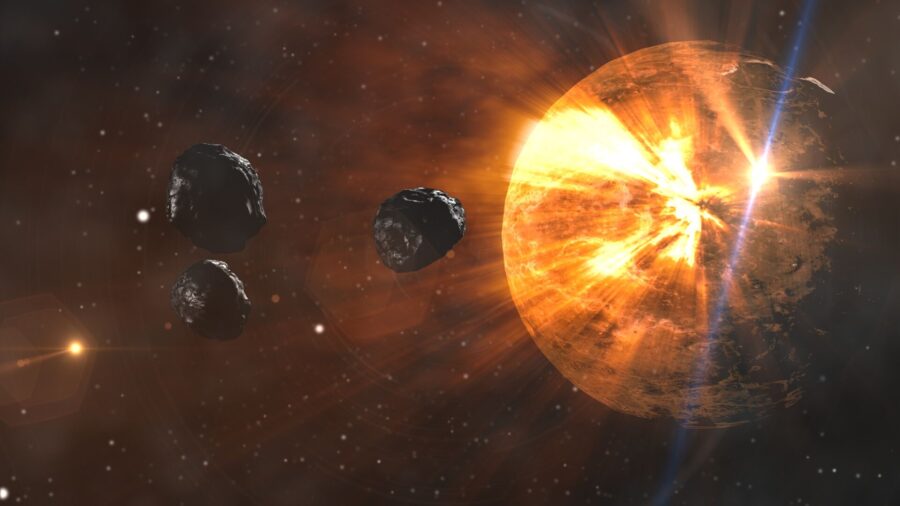A Planet Is About To Be Obliterated By Its Own Sun
Kepler-1658b, a giant exoplanet, will soon be destroyed when it collides with its own sun.
This article is more than 2 years old

Far away, in another solar system, a massive celestial body is on the verge of demise. CNET reports that Kepler-1658b, a gas giant exoplanet first discovered by the Kepler telescope in 2009, has been found to be inching ever closer to its star, Kepler-1658. According to calculations made by astronomers who have observed Kepler-1658b for over a decade, the exoplanet will be destroyed by a collision with its sun in the relatively near future – about two and a half million Earth years from now.
The Kepler space telescope was launched in 2009 with the purpose of finding Earth-sized planets in other solar systems. The vessel ran out of fuel and was retired in 2018, but the data it collected led to the investigation of the Kepler-1658 star and, subsequently, the gas giant exoplanet orbiting it up close and personal. For comparison, Mercury orbits the sun in 88 days; Kepler-1658b orbits in 3.85 days.
Scientists refer to planets like Kepler-1658b as “hot Jupiters,” gas giants who orbit close to their stars. This exoplanet, however, is almost six times the size of Jupiter. Because hot Jupiters are so massive and their orbits so short, they frequently interfere with a telescope’s image of the distant stars these planets orbit; this fluctuation in a star’s brightness makes hot Jupiters easier to detect than other kinds of exoplanets.
Exoplanet is a term for any planet that orbits a star outside our home solar system. Kepler-1658b was the first exoplanet the Kepler telescope ever found, though confirmation of the planet’s existence took about 10 years. Now that astronomers have had time to observe the planet, they have discovered that its doom is close at hand.

Shreyas Vissapragada, an astrophysicist at Harvard University, explained that the discovery is unique. However, many hot Jupiters have been observed, and Kepler-1658b is the first exoplanet to be found so close to such a mature star. This finding allows astronomers to observe the exoplanet’s relationship to its star, putting to the test theories about mature solar systems that have, up to now, been theoretical.
Kepler-1658b’s 3.85-day orbit time is decreasing each year by 131 milliseconds, indicating that the Kepler exoplanet is closing in on its star. Scientists theorize that the tidal relationship between the two celestial bodies is what is pulling the planet in, but they also believe that the mature star Kepler-1658 is expanding. Thanks to the Kepler telescope, scientists can learn more about this fascinating cosmic relationship.
Though the Kepler-1658 event offers an exciting opportunity to observe and study a doomed exoplanet, a hot Jupiter like Kepler-1658b is not the kind of world human beings could ever hope to inhabit. Still, the strange characteristics of the planet and its relationship to its star offer a wealth of insight into the gravitational dynamics of aging stars and the planets in their grip.
Vissapragada hopes that Kepler-1658b is the first of many exoplanets that humans can study in the coming years. The relationship between this distant planet and its expanding star offers humanity a glimpse at theories of the universe in action and could help shape our knowledge of the cosmos for centuries to come.











